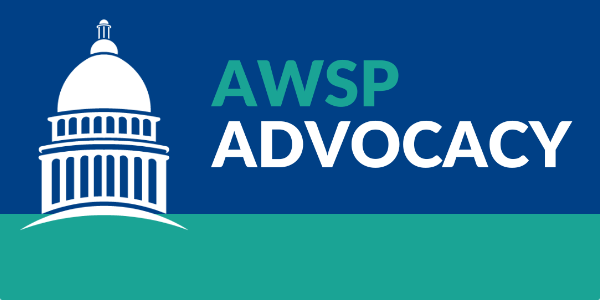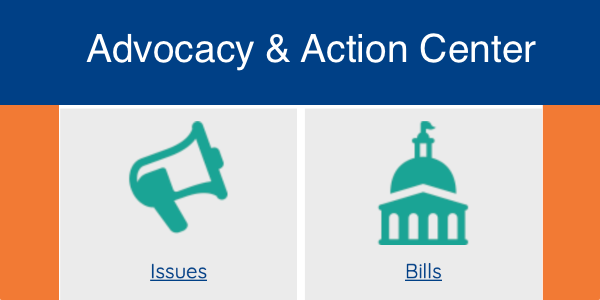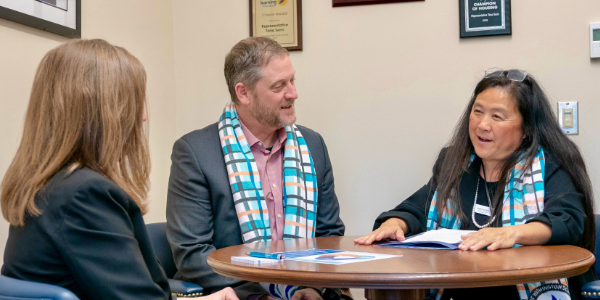Definition of “An embarrassment of riches”. So many good things that it is difficult to fund just one. The legislative session has concluded, the Governor has acted, and now as the show goes on, districts have to adjust. The supplemental budget (ESSB 5693) approved by the Legislature and the Governor increased general fund spending to $64 billion, an increase of $5 billion over the budget approved in April 2021. The final budget increased state spending by 24% over the previous biennium and by more than 50% since 2017.

Review of 2022 Legislative Session
Definition of “An embarrassment of riches”.
So many good things that it is difficult to fund just one.
Pensions, Health Care, SEBB, PEBB, & Other
The legislative session has concluded, the Governor has acted, and now as the show goes on, districts have to adjust.
The supplemental budget (ESSB 5693) approved by the Legislature and the Governor increased general fund spending to $64 billion, an increase of $5 billion
over the budget approved in April 2021. The final budget increased state spending by 24% over the previous biennium and by more than 50% since 2017.
The spending growth was fueled by stronger than expected tax collections and an infusion of Federal one-time dollars. The Legislature chose to dedicate more than 80% of these unexpected revenues toward new spending programs.
The final budget only maintains $821 million, or 2.8% of the budget, in reserves. However, it is also important to consider the general fund’s ending balance, the budget stabilization account (BSA) balance, as well as the new Washington Rescue Plan
Transition Account (WARPTA). There is a cushion of sorts. But even so, should the economy ‘tank,’ then the next session could be one of cutbacks…or as some call them, ‘claw backs’.
Similar to the last session, dollars were spread like peanut butter among many different entities, K–12 being one.
So, what happened regarding pensions, health care, financials, and other issues? Listed, unless stated otherwise, are bills that have passed both Houses and signed by the Governor.
Pension/Retirement Related Proposals
Retirement Related Proposals
SB 5676 | This bill will provide a one-time 3% benefit increase to certain retirees of the public employees’ retirement system
plan 1 and the teachers’ retirement systems up to the first $44,000 of pension income. ($110/month/maximum). This bill passed and was signed by the Governor. Effective July 1, 2022.
EHB 1699 passed. It will permit individuals retired from the PERS, TRS and SERS retirement systems additional opportunities to work
for a school district for up to 1,040 hours per school year while in receipt of pension benefits until July 1, 2025, including administrators in districts less than 2,000 students. The Governor signed the bill and because of its emergency clause it
became effective March 23, 2022.
EHB 1752 adds the option of Roth-qualified contributions to the public employee deferred compensation plan operated by the Department
of Retirement Systems. It has been signed by the Governor and becomes effective June 9, 2022.
School Employee Benefit Board (SEEB) and Other Health-Related Proposals
Last session (2021), Section 1212 (3) of the 2020 budget read “The health care authority must study the potential cost savings and improved efficiency in providing insurance benefits to the employers and employees participating in the public employees’
(PEBB) and school employees’ benefits board (SEBB) systems that could be gained by consolidating the systems. The consolidation options studied must maintain separate risk pools for Medicare-eligible and non-Medicare eligible employees and retirees,
assume a consolidation date of January 1, 2022.”
The HCA submitted a study that recommended consolidation and SB 5718 was introduced in the 2022 session. The concept was to keep K–12
non-Medicare retirees in the SEBB pool rather than currently moving them into PEBB. But there was too much complexity to make what was assumed to be an easy change, so the health care authority withdrew the proposal. It is likely to be reintroduced
in the 2023 session.
Other Bills
SSB 5326 (ESHB 1813)
mandates that the costs of contracted employee health and retirement benefits must be built into school district contracts for pupil transportation.
Both bills died in their respective houses last session, but the Senate version was reintroduced in 2022 and put immediately on the floor calendar. The Senate chose to place in the “X” file (which is, the graveyard for proposed bills), but
it is expected to rise from the dead again in some form during the 2023 session. (See future projections below.)
Other Bills That May Have Fiscal/HR Impacts For Districts.
SHB 1617 | Specifies that all state holidays are also school holidays on which school may not be taught clarifying that Juneteenth
is to be a school holiday. This bill was signed by the Governor and becomes effective July 1, 2022.
SHB 1732 | The implementation of many of the activities related to the Long-Term Services and Supports Trust Program (Trust Program)
are delayed. The date for beginning the collection of premium assessments under the Trust Program for both employees and self-employed persons is delayed by 18 months from January 1, 2022, until July 1, 2023. Premiums collected from employees before
July 1, 2023, must be refunded to the employee within 120 days of collection by the employer or by the Employment Security Department through the employer. Persons born before January 1, 1968, who do not pay the premium for the required 10 years needed
to become vested in the full number of benefit units may receive partial benefits under the Trust Program. For each year that persons in this population make the premium payments for the minimum of 500 hours, they may receive 10 percent of the maximum
number of benefit units. Persons in this population may still qualify for full benefits if they have paid the premium for three years within the last six years. This bill signed by the Governor on 1/27/2022 became effective immediately.
ESHB 1733 | Voluntary exemptions from the payment of premiums under the Long-Term Services and Supports Trust Program (Trust Program)
are established for employees in one of four categories:
- An employee who is a veteran of the United States military who has been rated by the United States Department of Veterans Affairs as having a service-connected disability of at least 70 percent may apply for an exemption from the Trust Program.
- An employee who is the spouse or registered domestic partner of an active-duty service member of the United States Armed Forces may apply for an exemption from the Trust Program.
- An employee who holds a nonimmigrant visa for temporary workers who is employed by an employer in Washington may apply for an exemption from the Trust Program.
- An employee who is employed in Washington but maintains a permanent residence outside of Washington as the employee’s primary location of residence may apply for an exemption from the Trust Program.
Unless a specified condition for termination of the exemption occurs, employees approved for an exemption are not required to pay the premium assessment, may not become a qualified individual or eligible beneficiary, and are permanently ineligible for
the Trust Program. This bill signed by the Governor on 1/2/7/2022 becomes effective June 9, 2022.
ESHB 1795 | Silenced No More Act: Non-disclosure agreements (NDA’s) are often standard parts of dismissal settlements. This act
makes void and unenforceable provisions in agreements between an employer and employee that prohibit the disclosure of conduct that is illegal discrimination, harassment, retaliation, a wage and hour violation, or sexual assault, or that is against
a clear mandate of public policy, occurring in the workplace. The bill signed by the Governor becomes effective June 9, 2022.
SHB 1902 provides for reopening a workers’ compensation claim where the provider fails to submit the application. This bill signed
by the Governor becomes effective June 9, 2022.
ESSB 5115 creates an occupational disease presumption for frontline employees during a public health emergency for the purposes of
workers’ compensation. • Requires employers to notify L&I when a certain percentage of their workforce becomes infected during a public health emergency. • Requires employers to provide written notice to employees on the premises
and their union of potential exposure to the infectious or contagious disease during a public health emergency. • Prohibits discrimination against an employee who is high risk for seeking accommodation that protects them from the disease or using
all available leave options if no accommodation is reasonable. This bill signed by the Governor becomes effective 5/11/2022.
SB 5539 | State funding shall be provided to each ESD for the employer cost of the school employees’ benefits provided to the
employees of the ESD covered by a collective bargaining agreement. This bill signed by the Governor becomes effective June 9,2022.
ESSB 5628 | This is an act relating to cyber harassment, addressing concerns in the case of Rynearson v. Ferguson, and adding a crime
of cyberstalking. It also specifies level of charge/alleged violation if done against named persons in the act such as election officials. It places in statue the criminal offense that school employees or students can claim occurred. This bill signed
by the Governor is effective June 9, 2022.
2SSB 5649 | Changes were made to the paid family leave program. Benefits are to be provided during the seven calendar days following
the death of the family member for whom the employee would have qualified for medical leave for the birth of their child; or would have qualified for family leave to bond with their child during the first 12 months after birth, or during the first
12 months after the placement of a child under age 18 with the employee. The CBA exception in the PFML program expires on December 31, 2023. An audit is required to determine the financial situation within the program. This bill signed by the Governor
is effective June 9, 2022.
ESSB 5761 | The requirement for an employer to provide salary information after an initial job offer, upon request of the applicant,
is removed. Instead, beginning January 1, 2023, an employer must disclose in each posting for each job opening the wage scale or salary range, and a general description of all of the benefits and other compensation to be offered to the hired applicant.
“Posting” means any solicitation intended to recruit job applicants for a specific available position, including recruitment done directly by an employer or indirectly through a third party, and includes any postings done electronically,
or with a printed hard copy, which includes qualifications for desired applicants. This bill signed by the Governor is effective January 1, 2023.
Selected Financials
ESSB 5693 State Budget
Below are selected financial figures from the adopted supplemental 2021–2023 Budget:
| | 2021-2022 | 2022-2023 |
| Fringe benefit allocation | 22.71% | 22.98%/Allocated Certificated |
| | 22.75% | 22.80%/Allocated Classified |
| Incremental fringe benefit | 22.07% | 22.34%/Allocated Certificated |
| | 19.25% | 19.30%/Allocated Classified |
Insurance Health Benefit (SEEB) | $968/Month | $1,026/Month |
The Benefit Allocation Factor/Multiplier remains at: Certified staff units x 1.02; Classified staff units x 1.43.
| Medicare Insurance Subsidy for Retirees | $183/Max/Month | $183/Max/Month |
| Substitute Rate | $151.86 | $151.86 |
(4 subs/classroom teacher unit)
| Health Care Carve-out (Retiree Remittance) | $72.08 Began 9/2021 | $80.04 Begins 9/2022 |
(Includes pro-rated payment by district for eligible part-time employees)
| Pension Rates | 2021–2023 |
| TRS 2 Employee | 8.05% |
| Employer | 14.24% |
(Normal cost 8.05%/ UAAL Surcharge 6.19%) | |
| PERS 2 Employee | 6.36% |
| Employer | 10.07% |
| (Normal cost 6.36%/ UAAL Surcharge 3.71%) | |
| SERS 2 Employee | 7.76% |
| Employer | 11.47% |
| (Normal cost 7.76%/ UAAL Surcharge 3.71%) | |
The employer rates do include the UAAL surcharge but do not include the 0.18% administrative rate.
*Note: The adopted budget indicates that PERS/SERS employer rates will increase 0.14%; TRS will increase 0.27% to fund SB 5676, the 3% one-time COLA for TRS/PERS 1 members. And as an aside, the investment return assumption that affects future rate charges
has been decreased from 7.5% to 7.0%.
What Will the Future Hold?
Although many policy bills proposed during the session failed to advance, some components will likely be re-introduced through either new legislation or rewriting a previous bill proposed during the recently concluded 2022 Session.
Moving into speculation on the future, some key activities may occur:
It will be a priority for the Democrats to not only maintain majorities in both houses but to build a more substantive and cohesive majority in the Senate which is currently 28–21. The Cap-and-Trade bill passed the Senate 25–24 which
is just one example of how a few Democrat Senators are not fully in support of leadership. For example, the long-term goal of tax reform will need 60% majority at a minimum. So, a larger majority would assist in passage.
Currently, the D’s hold a strong majority in the House, but as previously stated, a weaker one in the Senate. There is a strong chance that the D’s may lose the Senate majority and even possibly their House majority. Some legislative
districts to watch are the 10th (Island, Skagit, Snohomish), 19th (Cowlitz, Grays’ Harbor, Lewis) ,24th (Clallam, Grays’ Harbor), and the 42nd (Whatcom).
The Republicans will continue to organize opposition by beating up the Democrats over their passage of the Capital Gains tax, their failure to live within the state’s existing means, their ‘profligate’ spending with no relief
for the average taxpayer, and the Governor’s continuation of emergency powers.
Unions groups like WEA and SEIU and social advocacy associations/organizations like the Economic Opportunity Institute continue to have a great deal of influence on the successful passage of legislation and funding. Although many of these organizations
continue to get ‘one-time’ Federal dollars, when these funds are spent, they will be urging the legislature to continue to fund these programs. Issues like homelessness, mental health services, poverty, and equity to name a few
will continue to be priorities.
There continues to be a need to get full funding of the SEBB benefits for districts. The law says that districts are to fund benefits for every employee who qualifies. The state funds benefits on a formula-generated FTE allocation, not based on
the actual number of eligible employees that receive the benefit. This results in an unfunded liability to districts estimated to exceed $700 million dollars statewide.
If there is a missing piece to the financial planning puzzle, it is the failure to appreciate the limits on the state property tax. There is a false hope that property values will continue to soar showing a lack of understanding of business tax
shifts. In addition, there is a continuing desire to attach more exemptions to household property taxes. This poses a structural risk to the tax system and makes planning and even supporting levies problematic.
Past legislation allowed employees to bargain for insurance benefits for employees working less than 630 hours. There will continue to be pressure on districts to offer these benefits to all employees. A proposal before the 2021 legislature, revived
during the 2022 legislature and then ‘killed’ dictated that identical SEBB health benefits and retirement benefits be paid to employees who work with private providers of transportation services to school districts. This proposal
again failed but is likely to return. Should this pass, those contracted employees such as in food service, janitorial, special education, etc. working within school districts may well ask for similar benefit coverage. This is a classic unfunded
mandate unless the state funds these changes and even then, the state funds on staff formula basis, not an actual district FTE basis.
Efforts will continue to increase the Medicare insurance subsidy for retirees. Insurance and medical costs have gone up substantially. The current $183/ month is not enough to offset the increased costs.
Work will continue to put school retirees in the largest risk pool available to reduce their current insurance costs. Currently, K–12 retirees transfer to the PEBB program/pool. The HCA has studied the issue and recommends consolidating
school retirees into the SEBB program. This, however, is complex and will take revised legislation to accomplish.
If you have any questions, please feel free to make contact.
Fred Yancey
The Nexus Group LLC








